The Art and Design Department has clearly stated program-level expected student outcomes.
Although the Art and Design Department can state a set of unified goals, each program area (Art Education, Art History, and Studio Art) has a unique set of expected student outcomes. For Art Education the following outcomes have been developed for and accredited by NCATE. The following program outcomes for Art History and Studio Art have been developed by the assessment coordinators and contributing faculty based on the study of practices within the department and a survey of standards of peer institutions. These outcomes will be submitted to the program areas and department for approval.
Art Education Program Outcomes (per NCATE)
- Demonstration of scholarship as evidenced by application of research-based subject matter content in lesson planning, instructional materials design, and curriculum development, and the ability to critically assess and refine these materials based on the learning outcomes of these materials.
- Demonstration of attitudes and dispositions appropriate to the profession of teaching as evidenced by professional integrity and commitment to teaching, collegial communication, and interactions with students.
- Demonstration of leadership as evidenced by participation in extra-curricular activities, student mentoring, and community service.
Art History Program Outcomes
Students will demonstrate:
- General familiarity with the monuments and characteristics of major art periods of the past and present;
- Deep understanding of a variety of cultures and/or periods in the history of art;
- Some acquaintance with art theory and criticism;
- An understanding of the tools and techniques of art-historical scholarship;
- Familiarity with various methods of art-historical analysis;
- Familiarity with various processes of making art;
- Familiarity with the specialized operational procedures encountered in and employment opportunities offered by museums of art;
- The ability to think, speak, and write clearly and effectively about works of art and art history;
- The ability to conduct research on art using the tools of the art historian.
Studio Art Program Outcomes
- Students will demonstrate an understanding of the principles of art and design by using related problem solving skills to organize, analyze and interpret visual information.
- Students will be able to demonstrate fundamental studio practice; techniques, materials, and various creative methodologies.
- Students will be able to identify and articulate the significance of major periods and works in the history of art (Western, and non-Western)
- Students will effectively use techniques and materials of their discipline with knowledge of the traditional and contemporary practices of the area.
- Students will be able to effectively choose materials, processes, form, and content to engage in substantive self-directed artistic activity.
- Students will be able to demonstrate critical analysis applied to their own work and the work of others.
- Though completion of cognate courses, students will understand fundamentals of studio practice shared across studio disciplines
- Students will demonstrate an understanding of precedents of art history as context for contemporary artistic activity.
- Students will be able to assimilate knowledge by being able to make connections between art making and other diverse fields.
- Students will be able to communicate effectively orally and in writing about art to general and specialized audiences.
- Students will demonstrate effective preparation and presentation of work with an understanding of basic professional practices in the field.
Graduate Program Learning Outcomes
The Art and Design Department has clearly stated program-level expected student outcomes. Graduate Level Art Education Learning Outcomes include:
- Applying knowledge of child and adolescent psychology and intellectual development relevant to art education;
- Analyzing data of current pedagogical practices;
- Performing competency in selected areas of studio media;
- Recognizing past and current artistic movements and styles;
- Explaining the interdisciplinary connection of art to other subjects;
- Synthesizing the essentials of theoretical and practical research in art education.
